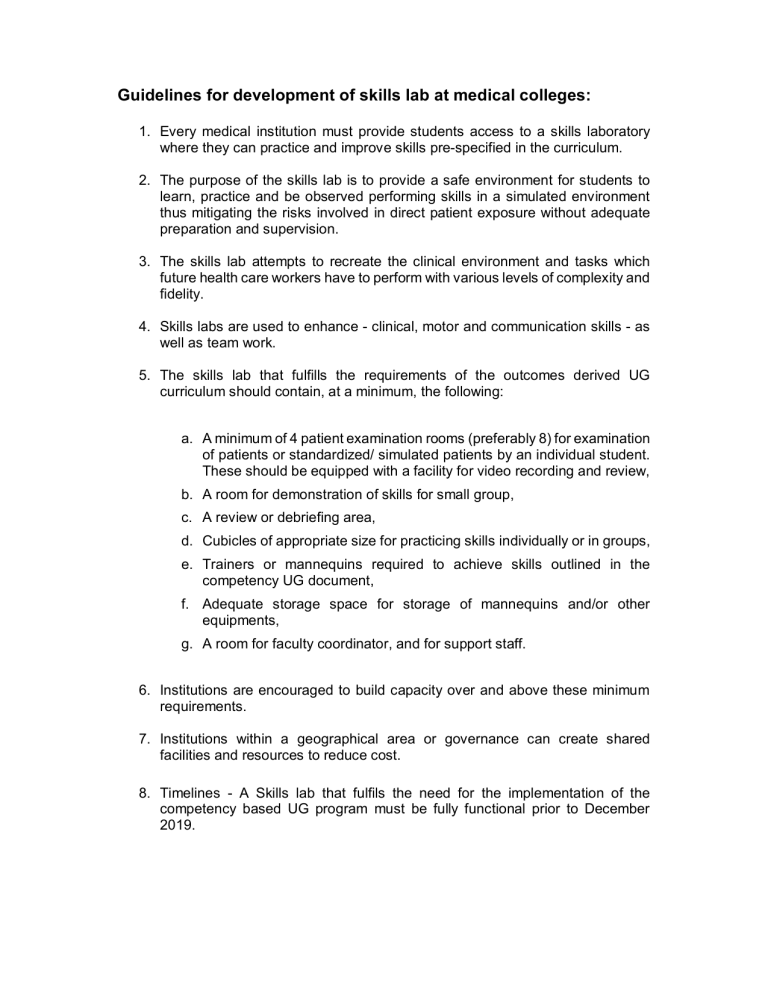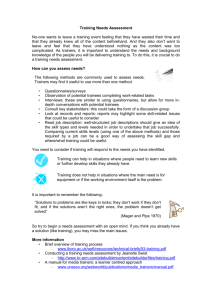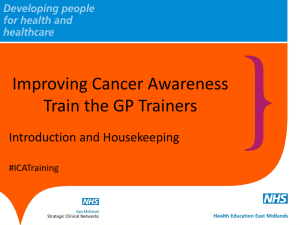
Guidelines for development of skills lab at medical colleges: 1. Every medical institution must provide students access to a skills laboratory where they can practice and improve skills pre-specified in the curriculum. 2. The purpose of the skills lab is to provide a safe environment for students to learn, practice and be observed performing skills in a simulated environment thus mitigating the risks involved in direct patient exposure without adequate preparation and supervision. 3. The skills lab attempts to recreate the clinical environment and tasks which future health care workers have to perform with various levels of complexity and fidelity. 4. Skills labs are used to enhance - clinical, motor and communication skills - as well as team work. 5. The skills lab that fulfills the requirements of the outcomes derived UG curriculum should contain, at a minimum, the following: a. A minimum of 4 patient examination rooms (preferably 8) for examination of patients or standardized/ simulated patients by an individual student. These should be equipped with a facility for video recording and review, b. A room for demonstration of skills for small group, c. A review or debriefing area, d. Cubicles of appropriate size for practicing skills individually or in groups, e. Trainers or mannequins required to achieve skills outlined in the competency UG document, f. Adequate storage space for storage of mannequins and/or other equipments, g. A room for faculty coordinator, and for support staff. 6. Institutions are encouraged to build capacity over and above these minimum requirements. 7. Institutions within a geographical area or governance can create shared facilities and resources to reduce cost. 8. Timelines - A Skills lab that fulfils the need for the implementation of the competency based UG program must be fully functional prior to December 2019. Appendix 1. Suggested facilities in Skill Labs (for 100 students) Part Time task trainers (level 1) Simulations e.g. models/manikins, for: o o o Various injections, IM, IV like arm, gluteal region: n=5 Catheter insertion n=4 Skin suturing n=5 Normal delivery + Pelvic Trainers: n=4 CPR n=4 Tracheal intubation n= 4 Breast Examination Trainer n= 2 Whole body manikins (Optional) Each model (Low or High Fidelity) should have a Module for training including objectives, methods and assessment. Modules can also have hybrid models where real patients or standardized/simulated patients can be used.


